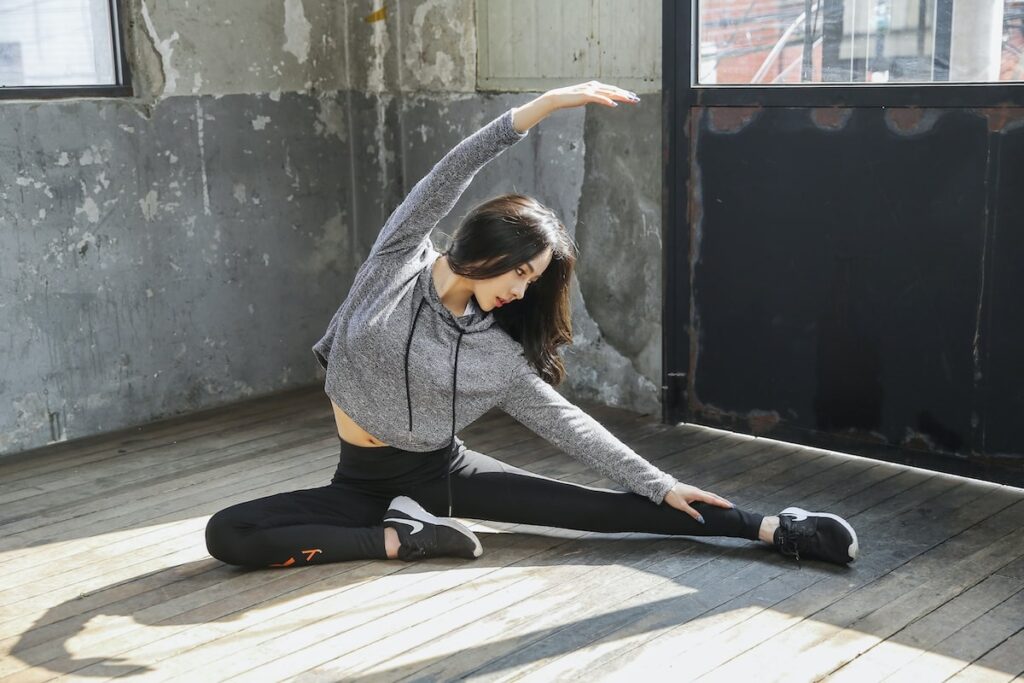Hey there, fitness enthusiasts! We’re all familiar with the exhilarating rush of hitting the gym or playing our favorite sport. But let’s face it – the last thing we want is an unwelcome sports injury sidelining us. In this guide, we’re diving deep into the world of preventive measures, arming you with invaluable tips to safeguard your muscles and joints. So, lace up those sneakers, and let’s embark on a journey to injury-free fitness!
Let’s kick things off with some wisdom from a fitness aficionado:
“Fitness is not about being better than someone else; it’s about being better than you used to be.”
Now, who doesn’t want to be a better version of themselves? Keep these words in mind as we explore ways to elevate our fitness game while prioritizing injury prevention.
We all yearn to unleash our inner athlete, soaring across fields, pounding pavements, or tackling opponents with Olympian zeal. Yet, lurking beneath the thrill of competition lies a constant threat: the specter of sports injury. Like unwelcome pit stops in our pursuit of athletic glory, they can sideline us, leaving behind frustration and aching limbs.
But fear not, fellow champions! Fearless knowledge is our ultimate weapon. By delving into the realm of preventative measures, we can armor ourselves against injury and keep our athletic engines roaring. So, grab your metaphorical water bottle, loosen your metaphorical laces, and get ready to dive into the world of safeguarding your musculoskeletal fortress.
18 Tips to Keep Sports Injury at Bay
1. Warm-Up Rituals: The Body’s Wake-Up Call
Before you launch into your workout, treat your body to a warm-up session. Think of it as a gentle nudge, signaling your muscles and joints that it’s time to get moving. Your body is a finely tuned engine. Do you fire it up at full throttle without a gentle warm-up? Of course not! Gentle stretches and light movement pre-exercise get the blood flowing, prepping your muscles for the demands ahead.

2. Embrace Proper Gear: The Unsung Hero
Invest in quality gear that suits your activity. Whether it’s running shoes with ample support or a well-fitted helmet for cycling, the right gear can be a game-changer in injury prevention.
Wearing the wrong shoes for a marathon is akin to attempting a tightrope walk in roller skates. Proper equipment plays a crucial role in injury prevention. Invest in well-fitting, supportive shoes specific to your chosen sport. Use protective gear like helmets, pads, and braces where appropriate. Don’t be afraid to consult experts at sporting goods stores to ensure you’re equipped for optimal performance and safety.
3. Mix It Up: Say No to Monotony
Repetitive motions can strain specific muscle groups and joints. Mix up your routine to engage different parts of your body and reduce the risk of overuse sports injury.
In the realm of fitness, monotony is the silent saboteur of progress. As the saying goes, “Variety is the spice of life,” and it couldn’t be more accurate when it comes to your workout routine. Repetitive motions might feel comfortable, but they come with a price – an increased risk of overuse sports injuries. It’s like playing the same note on a piano repeatedly; eventually, something is bound to snap. By diversifying your exercises, you not only keep things interesting but also distribute the workload across various muscle groups, reducing strain and minimizing the chance of sports injury.
4. Listen to Your Body: It Knows Best
When your body whispers, listen. Pain is its way of communicating, and ignoring it can lead to trouble. If something doesn’t feel right, modify your activity or consult a professional.
We often mistake the niggling aches and pains of fatigue for motivational fuel, pushing past our limits in a misguided attempt at achieving greatness. However, our bodies are remarkably eloquent communicators. That subtle twinge in your knee or the dull ache in your shoulder is their way of whispering, “Hey, slow down, I’m getting stressed!” Heeding these whispers is crucial. Taking rest days, adjusting your training intensity, and seeking professional guidance if the pain persists are signs of respect for your body, not weakness.
5. Strengthen the Core: The Powerhouse Within
Your core muscles act as a stabilizing force for your entire body. Incorporate exercises that strengthen your core to enhance overall stability and protect against sports injury. Think squats, lunges, and planks for core and lower body robustness, and resistance bands or bodyweight exercises for upper body resilience. Don’t forget about flexibility, either! Yoga, Pilates, or even dedicated stretching routines keep your muscles supple and less prone to tears.
6. Cool Down Gracefully: The Grand Finale
Just as you began with a warm-up, wrap it up with a cool-down. This helps your heart rate return to normal gradually and prevents stiffness. a cool-down routine acts as a graceful deceleration, allowing your body to smoothly transition back to its resting state. This dynamic routine minimizes the risk of muscle tears, strains, and other unpleasantries.
7. Hydration Magic: Water as Your Workout Partner
Dehydration can compromise muscle function and joint lubrication. Keep sipping water throughout your workout to stay hydrated and keep those joints moving smoothly.
Think of your body as a desert. Just as a desert needs the life-giving touch of rain, your muscles need the constant infusion of water. Dehydration can lead to fatigue, muscle cramps, and even heatstroke. Aim for eight glasses of water daily, and increase intake during intense training sessions or hot weather conditions. Carry a reusable water bottle to stay consistently hydrated and keep your internal oasis flourishing.
8. Mind the Surface: Terrain Matters
Be mindful of the surface you’re exercising on. Whether it’s a track, a court, or the gym floor, ensure it’s suitable for your activity to prevent slips, trips, or falls.
Different terrains pose varied challenges to your body. Concrete, for instance, can be unforgiving on your joints, leading to long-term issues. On the flip side, natural surfaces like grass or a rubberized track provide more shock absorption. Fitness expert, Mark Johnson, emphasizes, “Opt for softer surfaces for high-impact activities, and reserve harder ones for low-impact exercises to minimize sports injury risks.” Tailoring your surface to your activity can make a world of difference in injury prevention. Remember, the ground beneath your feet is as crucial as the shoes you wear.
9. Flexibility Training: Bend, Stretch, Prevent
Incorporate regular flexibility exercises into your routine. Flexible muscles and joints are less prone to sports injury, so make stretching a non-negotiable part of your fitness journey.
Flexibility is not just about touching your toes; it’s a powerful shield against sports injuries. As the saying goes, “In flexibility, there is strength,” and the stats back it up. A study published in the Journal of Sports Science & Medicine found that athletes incorporating regular flexibility exercises experienced a significant decrease in the incidence of sports injuries by up to 30%.
Flexibility exercises enhance the range of motion in your joints and promote elasticity in your muscles, acting as a preemptive strike against the notorious sports injury. Picture your muscles and joints as a rubber band – the more flexible they are, the less likely they are to snap under pressure.
10. Strength in Numbers: Buddy Up
Exercising with a friend not only makes workouts more enjoyable but also provides an extra set of eyes to ensure your form is on point, reducing the risk of sports injury.
Embarking on a fitness journey with a companion isn’t just about shared laughter and camaraderie; it’s also a strategic move to safeguard against sports injuries. As the saying goes, “Two heads are better than one” having a workout buddy provides an extra layer of protection. According to a study by the Journal of Sports Sciences, individuals who exercise with a partner are more likely to stay committed to their fitness routine, reducing the risk of sports injuries in the long run.
11. Rest Days Aren’t Optional: Embrace Them
Rest days are not a sign of weakness but a vital component of any fitness regimen. Your body needs time to recover and repair, so don’t skip those rest days.
Think of recovery as the flip side of the training coin. Just as your muscles need exertion to grow, they also need downtime to repair and rebuild. Prioritize adequate sleep, listen to your body’s need for rest days, and engage in active recovery activities like light walks or gentle yoga. Remember, rest isn’t laziness; it’s the secret weapon that fuels your next victory.
12. Professional Guidance: Seek the Experts
If you’re new to a sport or fitness routine, consider getting advice from a fitness professional. They can guide you on proper techniques and help you tailor your workouts to your fitness level.
“Pain is inevitable. Suffering is optional.”
Haruki Murakami, renowned novelist and marathon runner
These words echo the importance of seeking guidance from experienced coaches. Coaches not only refine your technique but also educate you on proper training methods, risk factors, and recovery strategies. Their knowledge can be the difference between pushing yourself to new heights and pushing yourself into an injury pitfall.
13. Nutrition Matters: Fuel Your Fitness
A well-balanced diet is not just about aesthetics; it’s about providing your body with the nutrients it needs for optimal performance and recovery.
Think of your body as a high-performance car, and food as its fuel. Just as a Ferrari wouldn’t run on cheap gas, your body needs the right nutrients to perform at its peak. Prioritize whole foods, fruits, vegetables, lean protein, and complex carbohydrates. Stay hydrated, avoid processed sugars and excessive saturated fats, and consider consulting a nutritionist for personalized guidance. Nourishing your body from the inside out builds resilience and aids in faster recovery.
14. Cross-Train Strategically: Mix and Match
Cross-training involves varying your workouts to enhance overall fitness. It’s like giving different parts of your body a turn on the spotlight, preventing overuse sports injury.
Repetitive strain is a common culprit behind sports injury. Break the monotony by incorporating cross-training into your routine. Swimming, cycling, or even dancing offer alternative ways to challenge your body and prevent overuse sports injury while adding a dash of fun to your fitness journey.
15. Regular Check-Ins: Assess and Adjust
Your fitness journey is a dynamic process. Regularly assess your goals, performance, and any signs of discomfort. Adjust your routine accordingly to ensure long-term success.
As the saying goes,
“Without continual growth and progress, such words as improvement, achievement, and success have no meaning”
Benjamin Franklin
Regular check-ins are your compass, guiding you through the dynamic landscape of your goals. According to a recent study by the Journal of Sports Medicine, individuals who consistently assess their fitness routines are 30% less likely to experience sports injuries. Think of these check-ins as pit stops on your road to success – moments to evaluate your course, celebrate milestones, and address any whispers of discomfort your body may be signaling. Remember, adjustments aren’t a detour; they’re the scenic route to long-term triumph over sports injuries. So, set sail with confidence, armed with the knowledge that your journey is not only dynamic but finely tuned for lasting
16. The Mental Game: Taming the Fear Factor
While we often focus on physical aspects, sports injury can also have a mental dimension. Fear of failure or injury can lead to hesitation, impacting performance and increasing susceptibility to mishaps. Cultivating a positive mindset, practicing mindfulness, and visualizing success are just some ways to conquer the mental demons and unleash your full potential.
17. Befriend the Foam Roller: Self-Myofascial Release Magic
Think of a foam roller as your personal masseuse in a compact, affordable package. Self-myofascial release techniques using a foam roller can work wonders in alleviating muscle tension, improving flexibility, and boosting recovery. Dedicate 10-15 minutes post-workout to rolling out those knots and tightness, and your body will thank you for the TLC.
18. Remember, Every Body is Different: Embrace Uniqueness
What works for your teammate might not work for you, and that’s okay! We all have unique bodies with different strengths, weaknesses, and injury susceptibilities. Listen to your body’s language, experiment with different training methods, and don’t be afraid to adapt your approach to suit your individual needs. Remember, comparison is the thief of joy, so focus on your own personal journey and celebrate every step you take toward becoming the best athlete you can be.
Your Body is Your Temple, Treat it with Respect

Our bodies are the magnificent vessels that carry us through life’s adventures, and in the realm of sports, they are the instruments of our athletic aspirations.
By prioritizing preventative measures, listening to our bodies’ whispers, and treating them with respect, we can not only avoid the pitfalls of injury but also unlock our full athletic potential.
So, lace up your shoes, grab your water bottle, and step onto the field of life with confidence, knowing you’ve equipped yourself with the knowledge and tools to conquer the arena and stay in the game.
Frequently Asked Questions
Q1: How long should a warm-up be before a workout?
A: Aim for a 5-10 minute warm-up to gradually increase your heart rate and prepare your muscles for activity.
Q2: Can I skip rest days if I feel fine?
A: No, rest days are essential for recovery. Overtraining can lead to fatigue and increased injury risk.
Q3: What should I eat before a workout?
A: Consume a balanced meal with carbohydrates and protein 2-3 hours before exercising.
Q4: How often should I change my workout routine?
A: Change your routine every 4-6 weeks to prevent plateaus and overuse sports injury.
Q5: Is it necessary to consult a fitness professional?
A: While not mandatory, consulting a professional can provide valuable insights and ensure proper technique.
Q6: What is the most important tip for preventing sports injury?
There’s no single silver bullet, but a combination of factors like proper warm-up and cool-down, strength training, listening to your body, and adequate nutrition are crucial.
Q7: How can I recover faster from sports injury?
Prioritize rest, active recovery activities like light exercise, and proper hydration. Consider professional guidance for severe sports injury.
Q8: What should I do if I experience pain while playing sports?
Stop immediately, ice the affected area, and seek medical attention if the pain persists or worsens.
Q9: Is cross-training a good way to prevent sports injury?
Absolutely! It reduces repetitive strain and keeps your body challenged, minimizing the risk of overuse sports injury.
Q10: How can I stay motivated to stay injury-free?
Celebrate your progress, no matter how small, and remember why you started playing sports in the first place. Focus on the joy of movement and the journey of becoming a healthier, stronger you.
Q11: What should I do if injured?
RICE is the standard first aid: Rest, Ice, Compress, Elevate the injured area. Then see a doctor or physiotherapist.
Q12: Can I keep playing with minor aches?
Be very careful—small issues often get worse if ignored. Rest is usually wise even for mild issues. Overuse is a major cause of longer-term problems.
Q13: How often should I replace my athletic shoes?
Normally every 400-500 miles or 6-8 months. Look for signs of wear like worn tread or sole compression. Replace sooner if shoes are causing pain.
Q14: Are knee braces or supports helpful?
For some people, yes—especially if you have a prior injury history or weak joints. Talk to your doctor or physiotherapist for a proper fit and use recommendations.
Q15: What stretches should I do?
Target the major muscle groups – quads, hamstrings, hips, back and shoulders. Hold stretches for 30 seconds and relax into them, not bouncing. See a physio for personalized routines.






